4.1 out of 5 stars 365 ratings
Currently unavailable.
We don't know when or if this item will be back in stock.
Size: 15" x 6.00-6"
Color: Yellow
| Brand | AR-PRO |
| Size | 15" x 6.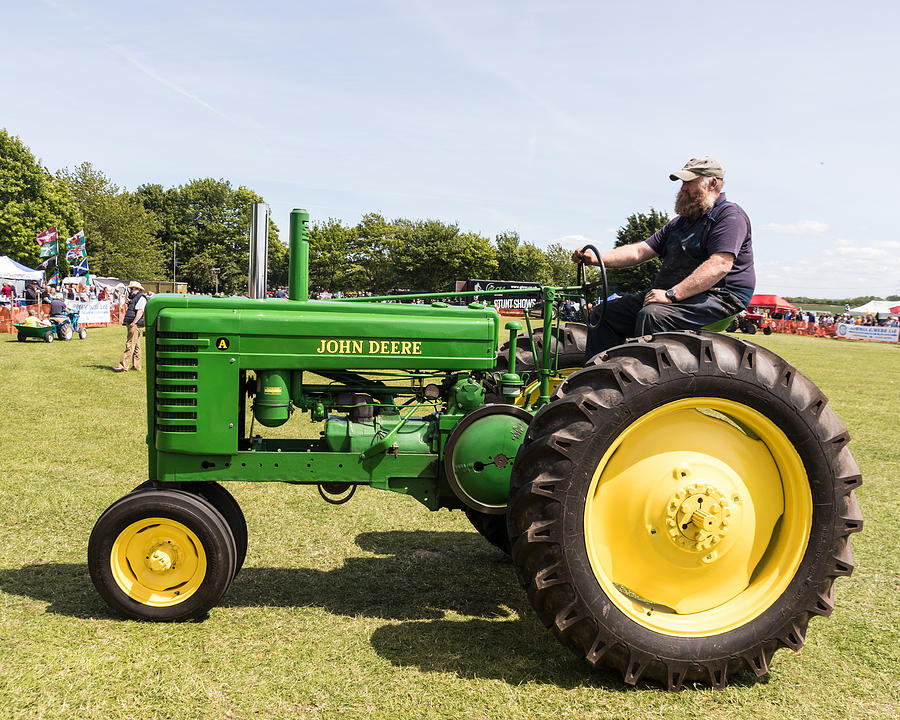 00-6" 00-6" |
| Rim Size | 6 Inches |
| Item Diameter | 15 Inches |
This fits your .
 Aside from having the exact wheel size, you should also ensure that your existing riding mower’s wheel assembly has a 3-inch hub offset and a 3/4-inch diameter bushing.
Aside from having the exact wheel size, you should also ensure that your existing riding mower’s wheel assembly has a 3-inch hub offset and a 3/4-inch diameter bushing. Note: Products with electrical plugs are designed for use in the US. Outlets and voltage differ internationally and this product may require an adapter or converter for use in your destination. Please check compatibility before purchasing.
Outlets and voltage differ internationally and this product may require an adapter or converter for use in your destination. Please check compatibility before purchasing.
Because you drive your John Deere lawnmower on rough surfaces, its tires can take a lot of wear and abuse. Over time, they may become flat for various reasons, which means you will have to fix them.
To fix a flat tire on a John Deere riding mower, you will want to first identify the problem by taking the wheel off the axle and inspecting it. Depending on the issue, you may need to patch the tire, install an innertube, or replace the whole thing.
Because each of these options requires multiple steps, we’re going to outline them in more detail.
Do You Need a Mower Repair Service?
Get free, zero-commitment quotes from pro contractors near you.
FIND LOCAL CONTRACTORS
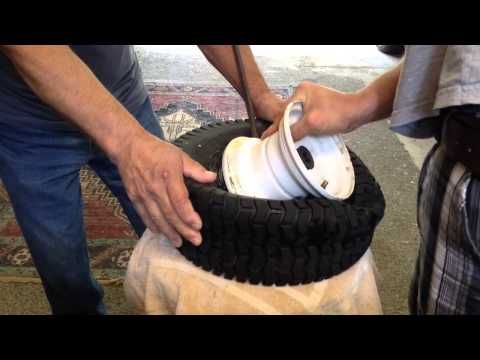
Usually, the cause of a flat tire is a puncture. However, if your mower is old, the rubber could be cracked, leading to slow leaks. The first step is to fill the tire with air. Then, visually inspect the rubber for any damage. Be thorough, as there could be multiple leak points, not just one.
If you can’t spot any issues, the next step is to cover the tire with soapy water. Doing this will allow you to see where air bubbles are forming.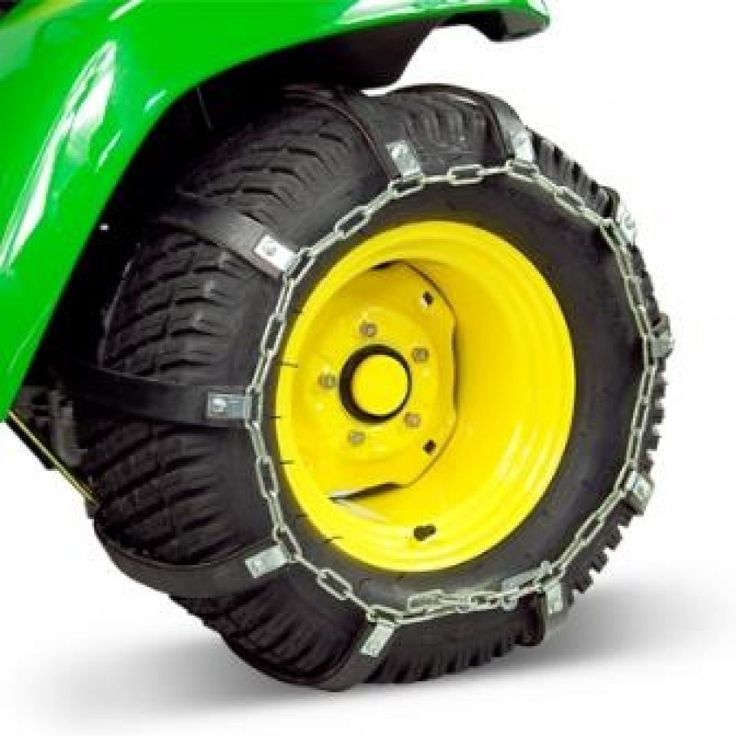 Again, be thorough when doing your inspection, and check the sidewalls, the bead, and the tread.
Again, be thorough when doing your inspection, and check the sidewalls, the bead, and the tread.
Depending on the extent of the damage, you have several options to fix the tire; patch it, install an innertube, or replace it. Here is a breakdown of each method.
If the leak is inside the tread, you can patch it. Because this wheel is tubeless, you can spray a tire sealant inside using the valve stem, following these steps.

Because these are tubeless tires, one way to extend their lifespan is to install an innertube. Doing this will allow you to drive on the wheel, even if there are cracks in the rubber. Be sure to select a tube size that fits your tire. If there isn’t a precise match, opt for one that is a little smaller.

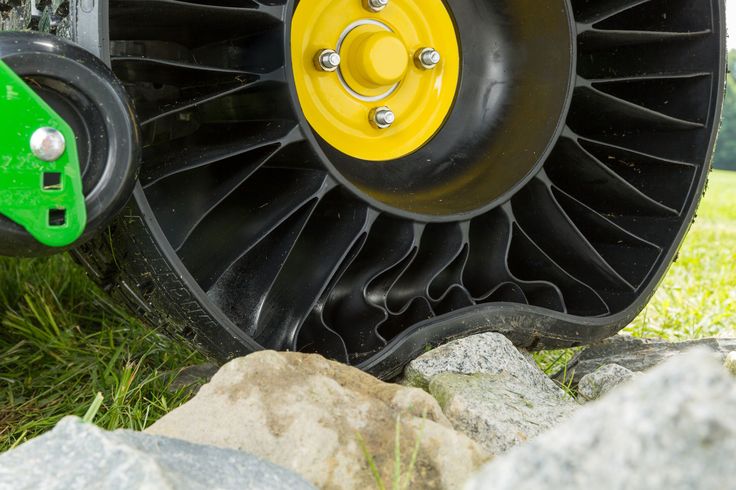 Start from the back and work your way forward.
Start from the back and work your way forward.If a patch or innertube doesn’t work, you will have to replace the whole thing. Since this wheel is tubeless, you can keep the original rim. Follow these steps to install a new tire.
 Make sure that the rim is secure on both sides.
Make sure that the rim is secure on both sides.Here are some ways to ensure that your project runs smoothly.

Do You Need a Mower Repair Service?
Get free, zero-commitment quotes from pro contractors near you.
FIND LOCAL CONTRACTORS
It depends on how old they are. If your wheels are relatively new, then they should be fine. However, if they’re more than five or six years old, it might be time to replace them all.
We always recommend using original parts when doing any kind of repairs. However, since tires are mostly identical, you can probably get away with an OEM model. Just make sure that it has the same dimensions as the old tire.
Just make sure that it has the same dimensions as the old tire.
What Color Rug Goes With A Beige Couch?
It is easier said than done to pair a rug with a beige couch. The last thing that you want to do is get a rug that clashes with your beige couch and ruins the vibe of the room. So, what color rug...
Continue Reading
link to What Color Goes With Rose Gold Décor?What Color Goes With Rose Gold Décor?
When you think of metallics in home design, things like chrome, brushed nickel, brass, and gold likely come to mind. But rose gold is a popular addition to the home décor scene and makes a big...
Continue Reading
John Deere's popular 7830 and 7930 models are part of the 7030 series third traction class. Tractors are characterized by a strong frame structure and a monoblock layout. But in order for them to serve properly for a long time, it is necessary to observe the timeliness of maintenance.
Tractors are characterized by a strong frame structure and a monoblock layout. But in order for them to serve properly for a long time, it is necessary to observe the timeliness of maintenance.
Photo source: act.suIt is important to observe the maintenance intervals for the long operation of the tractor
Each tractor shift requires a series of actions:
 During the first week of operation, it is recommended to tighten the wheel bolts every 3 hours.
During the first week of operation, it is recommended to tighten the wheel bolts every 3 hours. In addition, the tractor tire inflation pressure should be checked weekly.
Photo source: act.su Prevention of "diseases" of the tractor begins with shift maintenance

Listed below are the recommended maintenance intervals for 500, 750, 1000, or 1500 hours.
* The interval may vary depending on the conditions of operation of the tractor.
Specialists of "Agro-Construction Technologies" advise taking into account the following subtleties when maintaining tractor equipment.
 Oblique serifs correspond to FULL / full oil filling.
Oblique serifs correspond to FULL / full oil filling. 
Photo source: act.suVarious types of tractor maintenance are carried out at intervals from 10 to 1500 hours
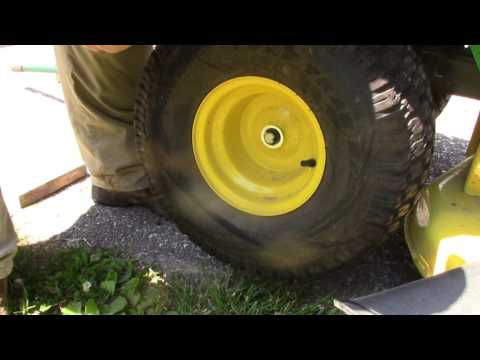

Photo source: act.suInspection of wheel tractor John Deere

Michelin Ultraflex technology,
for all stages of farming
Nowadays, agricultural enterprises and modern farmers are striving for a higher profitability of each hectare of crops. Large farms are increasing their area under crops, and harvesting occurs within a short period of time at the peak of cereal maturity.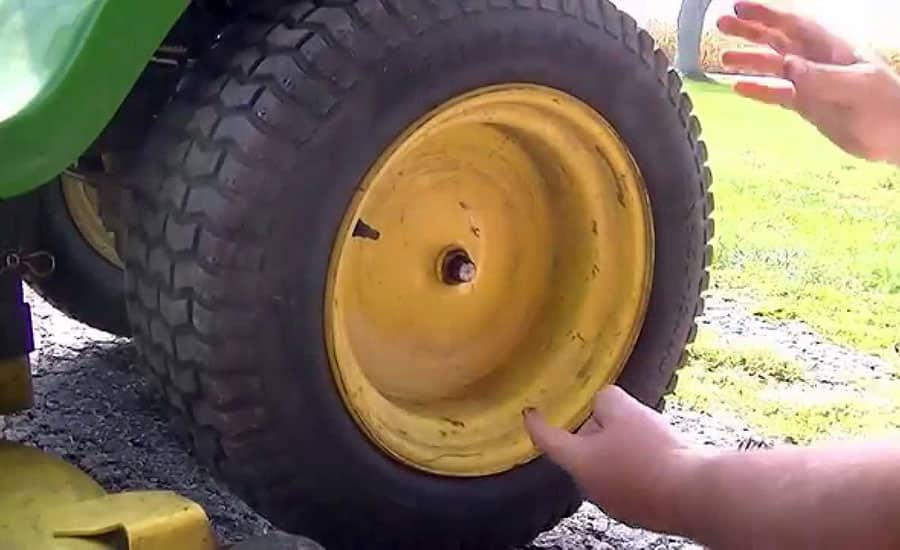 That is why the use of advanced technologies, and in particular high-tech tires, is becoming a prerequisite for efficient agricultural activities.
That is why the use of advanced technologies, and in particular high-tech tires, is becoming a prerequisite for efficient agricultural activities.
To demonstrate to Russian farmers the benefits of MICHELIN agricultural tires with Michelin Ultraflex technology, which help prevent soil compaction and allow significant fuel savings, on May 23, 2013, Michelin held a Field Days event for its customers in Rostov-on-Don. During this event, demonstration comparative tests of agricultural tires were organized, which clearly demonstrated to customers the effectiveness of the latest tire technologies.
“For us, this event is a great opportunity to bring our Russian customers together and, through comparative tests, remind them of the important role tires play in the agricultural business, to demonstrate the impact they have on their work, equipment, their land, and, ultimately, their profits,” notes Anatoly Guro, Director of the Agricultural Tires Department of the Eastern European Geographical Area of the Michelin Group.
During the demonstration, Michelin fitted a John Deere 7830 tractor with two sets of tires. Competitor tires were installed first, then 9 tires were installed similarly0077 MICHELIN XeoBib . The XeoBib tire, developed by the Michelin research teams for more than 4 years, is the first agricultural tire to operate at a constant low pressure of 1 bar in the fields (which does not result in soil compaction) as well as on the road independently from the speed of movement. Thus, Michelin XeoBib removes the main problem of farmers: the need to change tire pressure depending on the conditions of use (road or fields) and the speed of the vehicle.
The researchers then attached another tractor model, a John Deere 8430, to a John Deere 7830 tractor and ran it across a small area of the field. After the test drive, the participants noted the traces of the tractor on the soil and measured its compaction in each track. The test results showed that the tread depth on the MICHELIN XeoBib tires is significantly less than the competitor.
Participants then measured tractor fuel consumption under load on MICHELIN tires with Ultraflex technology and competitor tires. Measurements showed the efficiency of MICHELIN tires - an average of 15-20%.
Today, increasing the productivity of agricultural enterprises is associated with the use of more and more powerful and heavy machines with large dimensions that can withstand heavy loads. The use of such equipment requires manufacturers to solve problems associated with soil compaction and the permissible weight of the transported cargo. Soil compaction is one of the major problems in agriculture. That is why today the equipment of the park of an agricultural enterprise with modern, high-tech tires becomes the most relevant.
With MICHELIN Ultraflex technology, Michelin produces tires with three important benefits: better soil protection, significantly improved fuel economy and longer tire life.
These benefits create direct benefits for both large grain farmers and farmers or agricultural companies that are faced with the task of ensuring longer and more trouble-free operation of agricultural equipment, increasing yields, as well as reducing operating costs.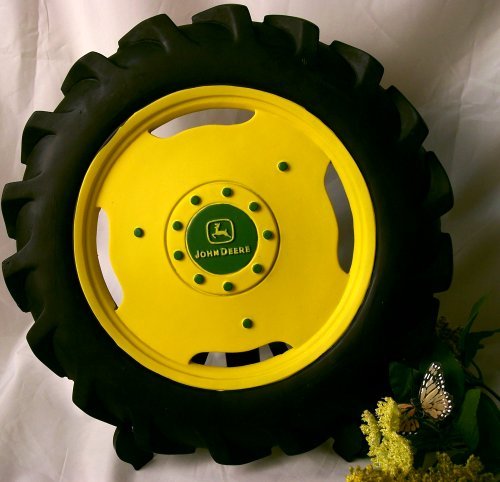
Tire MICHELIN Agribib
The MICHELIN Agribib radial tire is designed for tractors. The tire is distinguished by excellent traction characteristics, increased performance in loose and wet soil conditions, and a long service life.
In addition, the MICHELIN Agribib improves operator comfort with its 45° tread block design for optimal load distribution on the ground resulting in exceptionally smooth running agricultural equipment.
The MICHELIN Agribib improves grain farming performance with a larger footprint to better distribute the pressure exerted on the ground by harvesting equipment. The strong yet extremely flexible sidewalls allow more lugs to be in direct contact with the soil at one time, allowing you to use less tire pressure, thereby reducing soil compaction and increasing yields. Also, 20% more tread depth (compared to the previous generation tire) provides exceptional traction even when the tread depth decreases with wear.
MICHELIN XeoBib tire
XeoBib Agricultural Tire is a constant low pressure tire that pioneered this patented invention. The tire tread is made of a rubber compound with high thermal stability. This allows the Michelin XeoBib to experience the heat generated by driving at high speeds with low tire pressures and the mechanical stresses associated with strong bending without any consequences.
Compared to a tire of the same series, with identical load capacity and same diameter, the tread depth of the Michelin XeoBib is reduced by 55% and its contact patch is increased by 24%. By reducing the risk of soil compaction, Michelin XeoBib helps increase the agronomic potential of crops.
With less soil blowout and a 20% reduction in rolling resistance on loose soils, Michelin XeoBib provides a 3-7% improvement in traction, allowing the farmer to save time and reduce fuel consumption.
Deconsolidation with MICHELIN tires Multibib
Plowing the fields is necessary, first of all, to clean the soil from the remnants of last year's crops and restore its fertility. This stage of farming is highly dependent on tire traction.
Large farms often use powerful tractors to plow their fields most efficiently.
Michelin Multibib is a low profile wide tire, an excellent choice for medium to high power multi-purpose tractors. New multibib universal radial tires with speed index "D" (speed limit 65 km/h).
The tire has a number of advantages:
Compatible with standard rims
Michelin designed the Multibib™ radial tire to allow consumers to change tires to wider tires without having to change rims.
10% larger contact patch
Compared to the MICHELIN XM 108 tire, the Multibib™ has a wider tread and a significantly larger footprint.
Excellent traction is achieved through a wide flat tread and a larger contact patch, while reducing slippage and fuel consumption, improving performance.
35% longer service life
Multibib™ radial tires have 35% longer life than MICHELIN XM 108 radial tires.
High load capacity
The large volume of air in the tire and the larger contact patch allow this tire to be loaded to the maximum at normal or lower pressure than standard radial tires MICHELIN XM 108.
Comfort
The flexible sidewall and specially designed lug shape allows the tire to be used at low pressures, providing excellent comfort and handling.
The speed limit for MICHELIN Multibib tires on public roads is 65 km/h (unless otherwise allowed by local laws). At the same time, the MICHELIN Multibib tires provide a comfortable driving experience by reducing vibration and noise levels. Reduced vibration also contributes to less equipment wear.
Reduced vibration also contributes to less equipment wear.
Michelin is expanding its range of tire models and sizes to meet the needs of manufacturers producing ever more powerful and heavy vehicles. With a new generation of tires made with MICHELIN Ultraflex technology, farmers will be able to increase their productivity while protecting the soil. Agricultural companies can provide land conservation services to customers while taking advantage of low total cost of ownership through significant fuel efficiency and tire durability.
Michelin-developed Ultraflex technology provides agricultural equipment manufacturers with a number of benefits, such as: preserving the agronomic potential of the soil, saving time, improving the working conditions of the operator, and many others.
Soil protector
Agricultural tires need to be as flexible as possible to carry heavy loads without digging into or compacting the soil.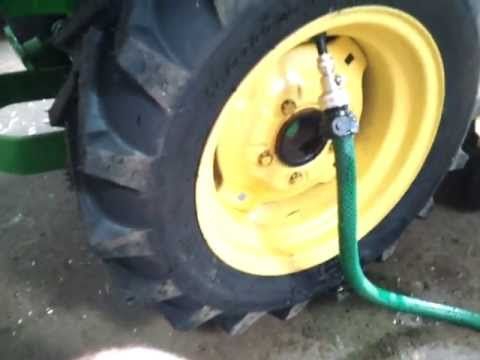 Tires made with MICHELIN Ultraflex technology feature a new architecture that allows the tire to operate at low inflation pressures and also significantly increases the contact patch area. This patented technology allows Michelin to produce agricultural tires with unparalleled flexibility without sacrificing strength or durability.
Tires made with MICHELIN Ultraflex technology feature a new architecture that allows the tire to operate at low inflation pressures and also significantly increases the contact patch area. This patented technology allows Michelin to produce agricultural tires with unparalleled flexibility without sacrificing strength or durability.
When using traditional tires, the recommended tire pressure must be adhered to depending on the speed category and load. The required data is given in the load/pressure/speed tables.
- If the load increases, the pressure must also be increased.
- If the speed increases, the pressure must also be increased.
However, MICHELIN Ultraflex technology has changed that rule by making it possible to optimize tire pressure regardless of vehicle speed. When the load or speed of the vehicle is increased, the pressure in new tires will always be less than in tires of the same size but made with conventional technology. By reducing soil compaction, fields are protected and yields are increased. This is especially true when using modern farming technologies such as direct seeding.
This is especially true when using modern farming technologies such as direct seeding.
Fuel Efficiency
Thanks to their increased footprint, MICHELIN Ultraflex tires provide excellent traction in both dry and wet conditions. This reduces slippage, which in turn saves time and reduces fuel consumption.
Longevity
Current trends are towards larger farms, as many farmers buy or lease new plots, sometimes located far from their main property. As a result, farmers have to drive their equipment on public roads more, which imposes additional requirements on tire durability.
Michelin uses two main approaches to meet these requirements:
The design of the tire features a flat crown that provides a more even load distribution in the contact patch. Due to the even distribution of the load, tire wear is also uniform and therefore slower.
Michelin has developed a new grouser design.